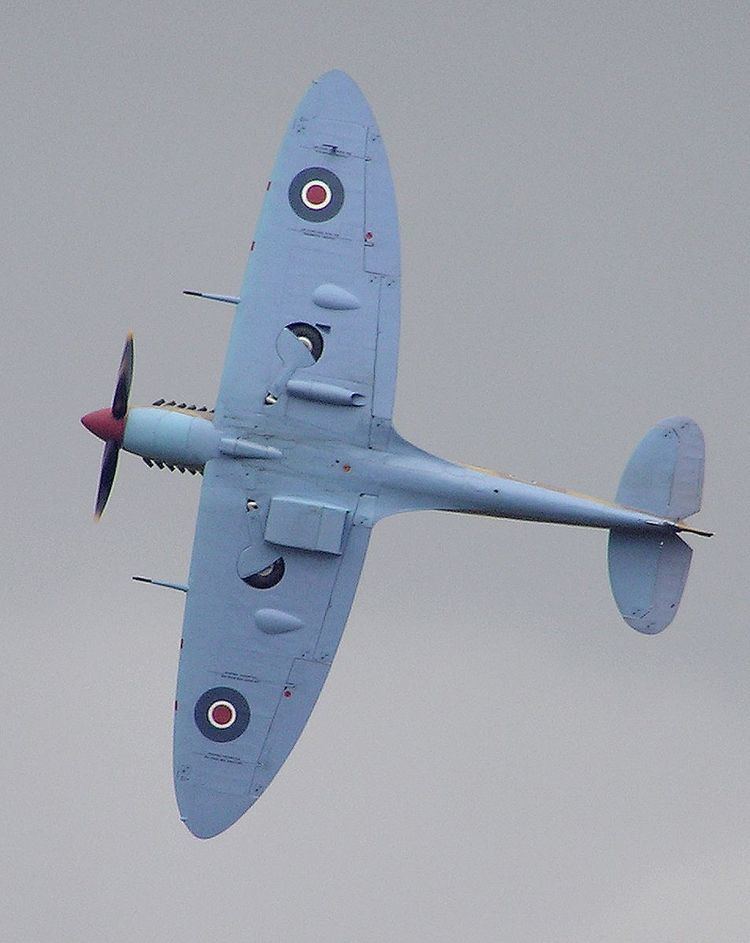 | ||
An elliptical wing is a wing planform whose leading and trailing edges each approximate to segments of an ellipse.
Contents
Not to be confused with annular wings, which may be elliptically shaped
Properties
Theoretically, the most efficient way to create lift is to generate it in an elliptical spanwise distribution across the wing. The basic elliptical wing meets this condition. Elliptical taper of a constant-aerofoil section wing shortens the chord near the wingtips in such a way that all parts of the wing experience equivalent downwash, and lift at the wing tips is essentially zero, improving aerodynamic efficiency due to a greater Oswald efficiency number in the induced drag equation.
The superiority of the pure elliptical shape is only theoretical. Wings with other planforms can be optimized to give the necessary elliptical spanwise lift distribution.
The basic elliptical wing shape also has disadvantages:
The semi-elliptical wing
For a wing to have an elliptical area distribution, it is not necessary for both the leading and trailing edges to have an elliptical shape. If one of these is straight, as in the semi-elliptical planform, the wing will still have an elliptical area distribution.
Several aircraft of this type have been produced, one of the most successful being the American Seversky P-35.
History
Few aircraft have used the elliptical wing, and even fewer have seen mass production, most in the 1950s and 60s. It was first used in the 1920s, [see Bäumer B II "Sausewind" of 1925]. The Supermarine S.4 racing seaplane flew in 1925. It failed to win its race but its designer, Reginald Mitchell, would later return to a near-elliptical planform for the Spitfire, which first flew in 1936. The German Heinkel He 70 "Blitz" of the early 1930s was a fast mail plane and reconnaissance bomber, and the predecessor to the Heinkel He 111 bomber, early models of which used an elliptical wing. Almost all of the United States Republic P-47 Thunderbolts used elliptical wings, except the last models, which had squared-off wingtips. The Imperial Japanese Navy used an elliptical wing very similar to that of the He 70 on their Aichi D3A dive bomber, and the external wing outline of the excellent 1930s era Mitsubishi A5M carrier fighter was almost identical to that of the Spitfire, in spite of being brought into service well before the Spitfire was. Several other types had planforms which differed relatively little from the elliptical.
The British Aircraft company Swift Aircraft are currently developing a two-seater Very Light Aircraft, Light-sport aircraft and CS-23 category Aircraft, the Swift Aircraft Swift, featuring elliptical wings.
